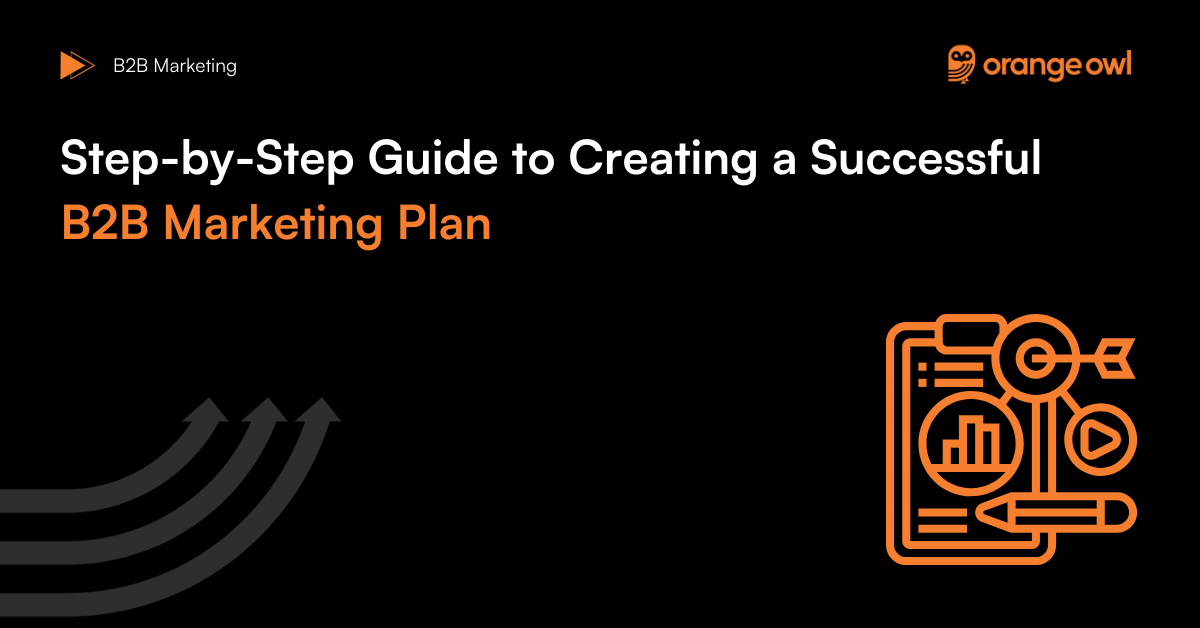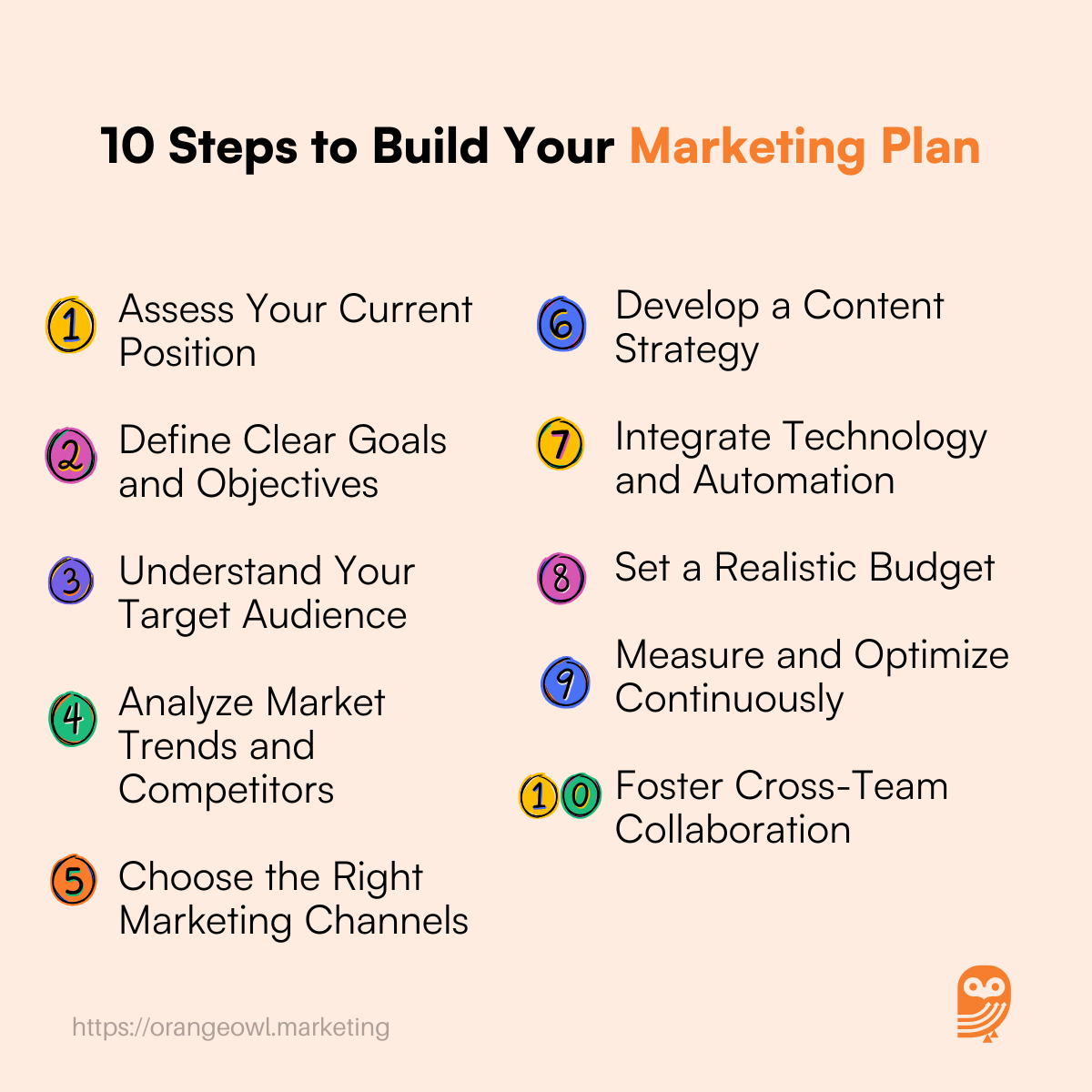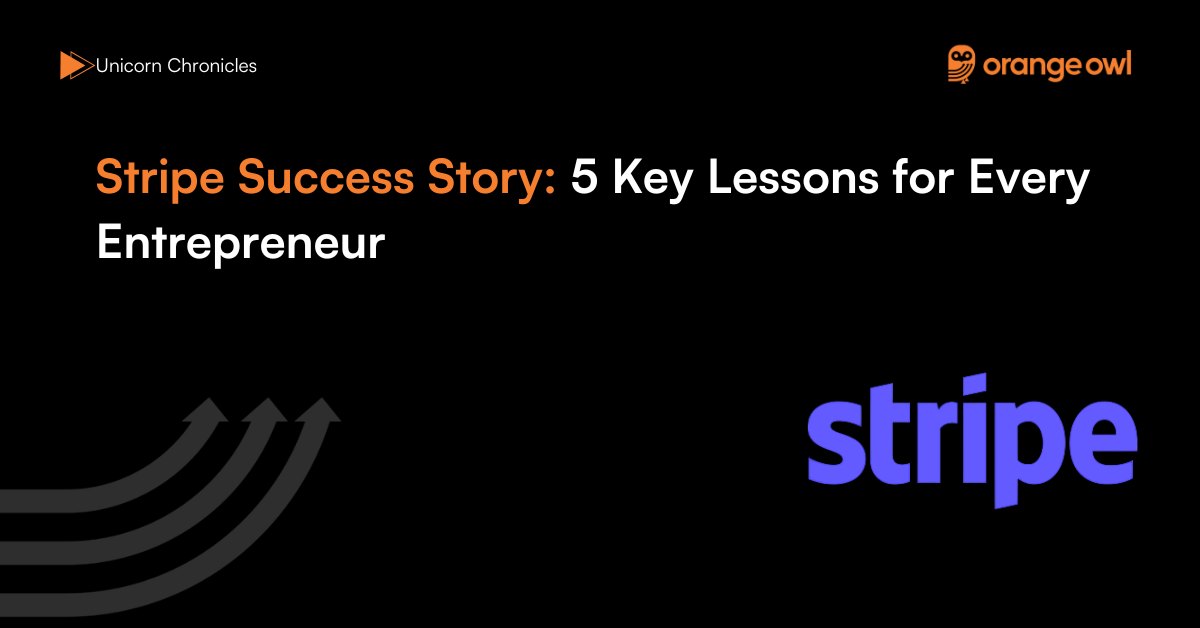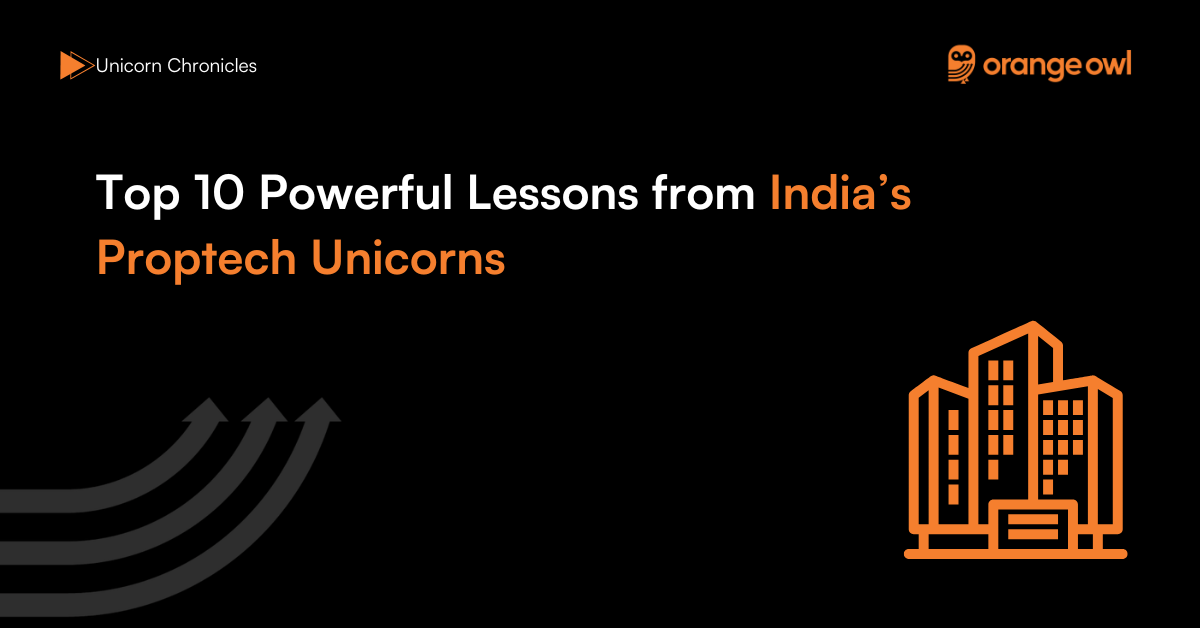Step-by-Step Guide to Creating a Successful B2B Marketing Plan
Vivek Goel
December 24, 2024

Table of Contents
Introduction
In today’s dynamic B2B landscape, building a robust marketing plan is crucial for sustained success. As 2025 approaches, B2B businesses must strategically prepare to navigate evolving trends, technological advancements, and shifts in client expectations. A well-defined marketing plan not only serves as a blueprint for achieving goals but also aligns cross-functional teams with the organization’s overarching vision.
Whether you’re a growing startup or an established player in the B2B arena, investing in a comprehensive marketing plan can help secure a competitive edge, drive growth, and enhance client engagement.
This blog provides a detailed, step-by-step guide to creating a highly effective B2B marketing plan for 2025, along with the significant benefits it brings to your organization. Let’s get started!
What is a B2B Marketing Plan?
A B2B marketing plan is a strategic document that outlines how a business will market its products or services to other businesses. It serves as a roadmap detailing the goals, target audience, strategies, tactics, and metrics necessary to attract and retain business clients.
Key Elements of a B2B Marketing Plan
Executive Summary:
- Overview of the marketing plan.
- Key objectives and outcomes expected.
Business Goals:
- Clear, measurable goals that align with the company’s overall objectives (e.g., increase B2B lead generation by 25% in 6 months).
Target Audience:
- Detailed buyer personas based on industry, role, company size, pain points, and purchasing behavior.
- Segmentation of the audience for personalized messaging.
Competitive Analysis:
- Understanding of the market landscape.
- SWOT analysis to assess strengths, weaknesses, opportunities, and threats.
- Study of competitors’ strategies and positioning.
Unique Value Proposition (UVP):
- Articulation of what sets your business apart and the unique benefits it offers.
Marketing Strategies:
- Inbound Marketing: Content marketing, SEO, email marketing, and webinars.
- Outbound Marketing: Paid advertising, direct emails, and trade shows.
- Account-Based Marketing (ABM): Personalized strategies targeting specific high-value accounts.
Marketing Channels:
- Selection of appropriate platforms (e.g., LinkedIn, industry publications, email, PPC campaigns) based on where your target audience is most active.
Content Plan:
- Creation of whitepapers, blogs, case studies, videos, and infographics tailored to business needs and stages of the sales funnel.
Budget Allocation:
- Breakdown of financial resources across various channels and initiatives.
Timeline:
- Clear deadlines and milestones for campaign execution.
Metrics and KPIs:
- Criteria to measure success, such as lead quality, website traffic, conversion rates, and ROI.
Implementation Plan:
- Step-by-step execution framework detailing who will do what and when.
Monitoring and Optimization:
- Regular performance reviews to identify areas of improvement.
- Adjustments to strategies and tactics based on data-driven insights.
Why You Need a B2B Marketing Plan?
A well-crafted B2B marketing plan offers numerous benefits that directly impact your business growth and success. Here are some key advantages:
1. Provides Strategic Direction
A marketing plan serves as a roadmap, ensuring your team’s efforts are aligned with business objectives. It helps prioritize initiatives, allocate resources effectively, and reduce wasted efforts.
2. Enhances Decision-Making
By evaluating market trends, audience insights, and past performance, a B2B marketing plan empowers data-driven decision-making. This minimizes guesswork and improves campaign outcomes.
3. Improves Resource Allocation
With a clear understanding of goals and priorities, you can allocate your budget, time, and team’s efforts efficiently, ensuring maximum ROI.
4. Drives Consistency Across Channels
A B2B marketing plan ensures consistent messaging and branding across all channels, enhancing your credibility and building trust with your target audience.
5. Facilitates Measurable Success
By setting specific KPIs and tracking performance, a B2B marketing plan helps measure success accurately, enabling continuous improvement and accountability.
6. Strengthens Team Collaboration
A unified plan aligns marketing, sales, and customer success teams, fostering collaboration and improving overall efficiency.
Now that we understand the benefits, let’s dive into how to create a B2B marketing plan that delivers results.
10 Steps to Build Your B2B Marketing Plan
1. Assess Your Current Position
Start by analyzing your 2024 marketing performance to identify strengths, weaknesses, opportunities, and threats. Metrics like ROI, customer acquisition cost (CAC), customer retention rates, and sales pipeline growth are essential for evaluation. Involve both your team and clients to gather comprehensive insights.
Example: A B2B SaaS provider might find that email campaigns yielded the most leads, while paid search ads generated low-quality leads despite high clicks. Meanwhile, webinars may have driven significant engagement, highlighting a potential area to scale.
Action: Document these insights to inform your 2025 strategy. Conduct a SWOT analysis and evaluate all campaigns, channels, and tools to refine your approach.

2. Define Clear Goals and Objectives
Set SMART (Specific, Measurable, Achievable, Relevant, Time-bound) goals that align with your company’s business objectives. Break these goals into manageable milestones to ensure consistent progress.
Example: If your B2B objective is to increase revenue by 25%, your marketing goals could include generating 40% more qualified leads, improving lead-to-conversion rates by 10%, and reducing churn by 15% through client success initiatives.
Action: Translate these goals into quarterly targets and assign responsibility to specific team members. For instance, the sales team can focus on conversion improvement, while marketing concentrates on lead generation.
3. Understand Your Target Audience
Update your ideal customer profiles (ICPs) and buyer personas. Consider how client pain points, decision-making processes, and preferred communication channels have evolved. Incorporate insights from account-based marketing (ABM) strategies to refine targeting.
Example: A B2B logistics provider might discover that mid-sized manufacturers value real-time supply chain updates and prefer interacting via LinkedIn and email over other channels.
Action: Use tools like LinkedIn Analytics, CRM data, and client interviews to update buyer personas. Segment your audience for hyper-personalized campaigns tailored to each ICP’s needs.
4. Analyze Market Trends and Competitors
Stay informed about industry innovations and analyze competitor strategies. This helps uncover gaps, differentiate your offerings, and capitalize on emerging trends.
Example: If a competitor is leveraging thought leadership content on AI-powered supply chain solutions, you might explore creating webinars or whitepapers addressing how your technology offers actionable ROI for similar challenges.
Action: Conduct regular competitor benchmarking and utilize market research reports to refine your positioning and messaging. Consider incorporating emerging B2B trends like personalization through AI or hybrid event strategies.
5. Choose the Right Marketing Channels
Identify which channels work best for your B2B target audience. While digital marketing often dominates, traditional channels like trade shows or direct mail may still play a role. Test niche platforms to uncover untapped opportunities.
Example: A B2B SaaS company might focus on LinkedIn and content syndication platforms to engage decision-makers, while also running targeted PPC campaigns on Google for lead generation.
Action: Allocate your budget strategically across channels. For instance, devote 50% to proven channels, 30% to testing new platforms, and 20% to experimental approaches like podcasts or interactive infographics.
6. Develop a Content Strategy
Content remains the backbone of any B2B marketing strategy. Focus on creating high-value, educational content that positions your brand as an industry leader. Prioritize SEO, thought leadership, and lead magnets like eBooks or case studies.
Example: A cloud computing company could launch a quarterly webinar series tackling common IT challenges, accompanied by blog articles, social media snippets, and follow-up emails.
Action: Use tools like HubSpot, Trello, or CoSchedule to plan and schedule content. Ensure consistency across formats, including whitepapers, blogs, videos, and client success stories.
7. Leverage Technology and Automation
Adopt marketing automation tools to streamline efforts, improve efficiency, and scale personalization. Use analytics to monitor performance and refine campaigns in real-time.
Example: A B2B consulting firm might use HubSpot for email automation, Salesforce for CRM, and AI-driven chatbots to nurture leads through personalized interactions.
Action: Evaluate platforms like Pardot, Marketo, or ActiveCampaign based on your business needs. Incorporate predictive analytics to optimize campaign timing and targeting.
8. Set a Realistic Budget
Plan your marketing budget around your goals, expected ROI, and previous performance. Factor in costs for technology, creative assets, media spend, and contingency funds.
Example: A company focusing on ABM might allocate a significant portion of its budget to personalized outreach efforts, such as account-specific microsites or premium direct mail campaigns.
Action: Regularly track spending to ensure alignment with your goals and make adjustments as necessary. Set aside 10–15% of your budget for testing innovative strategies.
9. Measure and Optimize Continuously
Implement KPIs for every campaign and use analytics tools to monitor performance. Encourage teams to experiment and iterate based on data-driven insights.
Example: A B2B marketing agency might measure the success of LinkedIn ads through metrics like form completions, MQLs, and pipeline contribution.
Action: Schedule monthly reviews to refine strategies. Share campaign performance insights across teams to foster collaboration and continuous improvement.
10. Foster Cross-Team Collaboration
Ensure alignment between marketing, sales, and customer success teams. Shared goals, clear communication, and regular collaboration lead to seamless execution.
Example: A cybersecurity company could organize monthly meetings between sales and marketing to share insights on lead quality and campaign effectiveness.
Action: Use project management tools like Slack, Monday.com, or Asana to coordinate efforts. Establish shared KPIs to track collective progress.
Conclusion
Crafting a comprehensive B2B marketing plan is essential for navigating the complexities of 2025. By analyzing past performance, setting SMART goals, understanding your audience, leveraging technology, and fostering collaboration, you can build a roadmap that drives measurable results.
The benefits of creating such a plan are undeniable: strategic direction, improved decision-making, efficient resource allocation, and measurable success—all contributing to your business’s long-term growth.
Proactive planning ensures your business not only stays competitive but also thrives in an ever-evolving B2B landscape. The time to start is now—what’s your first step? Share your thoughts in the comments below!
Frequently Asked Questions (FAQs) on B2B Marketing Plan
A marketing plan is the foundation of your business’s growth strategy, providing a structured roadmap to achieve your goals. In 2025, where market dynamics and customer preferences evolve rapidly, a well-crafted plan ensures your efforts are aligned with business objectives. It allows you to allocate resources efficiently, prioritize key initiatives, and measure progress systematically. Without a plan, businesses risk wasted efforts, inconsistent messaging, and missing opportunities to capitalize on market trends.
The focus of a 2025 marketing plan should be adaptability and innovation. With increasing digital transformation, businesses must embrace personalized marketing to create meaningful customer connections. Other focus areas include leveraging technology like AI for data analysis and predictive insights, addressing sustainability to resonate with conscious consumers, and experimenting with immersive content formats like AR and VR. Balancing short-term wins with long-term brand building is also crucial.
It’s essential to treat your marketing plan as a living document. While a yearly plan provides a broad framework, regular updates—ideally every quarter—ensure it stays relevant. Quarterly reviews help incorporate new market trends, respond to unforeseen challenges, and analyze the performance of your strategies. For example, if a campaign isn’t delivering expected results, you can pivot quickly to optimize for better outcomes. Regular updates also keep the team aligned and focused on current priorities.
Market research is a cornerstone of an effective marketing plan. It provides valuable insights into customer behaviors, emerging trends, and competitive positioning. By understanding what your target audience needs and expects, you can create tailored campaigns that resonate more deeply. Additionally, market research helps identify gaps in the market and potential areas for differentiation. For instance, tracking competitors’ strategies can reveal opportunities to innovate or refine your approach.
Small businesses can succeed with limited budgets by focusing on high-impact, low-cost strategies. Start by leveraging organic channels like social media, blogs, and email marketing to engage your audience without significant ad spend. Use free or affordable tools like Canva for graphics, Google Analytics for insights, and Mailchimp for email campaigns. Prioritize channels where your audience is most active, and continuously measure ROI to ensure you’re investing in what works best.
The metrics you choose should align with your objectives. For example, if you’re focused on brand awareness, monitor impressions, reach, and engagement rates. For lead generation, track conversion rates, cost per lead, and customer acquisition cost (CAC). Customer retention efforts should focus on metrics like churn rate, repeat purchase rate, and customer lifetime value (CLV). Using tools like Google Analytics, HubSpot, or Tableau can provide actionable insights into these metrics.
Staying ahead of trends is crucial for maintaining a competitive edge. In 2025, some key trends include AI-driven personalization to enhance customer experiences, short-form videos on platforms like TikTok and Instagram Reels for engagement, and influencer partnerships for credibility. Sustainability is increasingly important, so incorporating eco-friendly practices into your branding can resonate with socially conscious consumers. Additionally, exploring blockchain for transparent advertising or NFTs for unique customer rewards can offer a futuristic appeal.
Team alignment requires clear communication and collaboration. Start by involving all relevant departments—marketing, sales, product, and customer service—in the planning process to ensure shared understanding. Use project management tools like Asana, Trello, or Monday.com to assign tasks, set deadlines, and track progress. Regular check-ins and feedback sessions can address any misalignments early. For large initiatives, create detailed documentation outlining roles, responsibilities, and key milestones to keep everyone on the same page.
Traditional marketing channels are far from obsolete and can complement digital efforts effectively. For instance, direct mail campaigns, when paired with QR codes, can drive traffic to digital platforms. Similarly, in-person events like trade shows or community gatherings foster personal connections that digital interactions can’t replicate. Combining traditional methods with digital tools—such as using event apps to enhance the attendee experience—can create a holistic strategy that appeals to a diverse audience.
The key to navigating challenges lies in flexibility and preparedness. Build contingency plans and allocate a portion of your budget to handle unexpected situations like market disruptions or changing customer demands. Monitor trends and consumer sentiment closely to spot shifts early. For example, during economic downturns, consider shifting focus to value-driven messaging or affordable product lines. Encourage an agile mindset within your team, allowing quick pivots to new strategies when needed.



